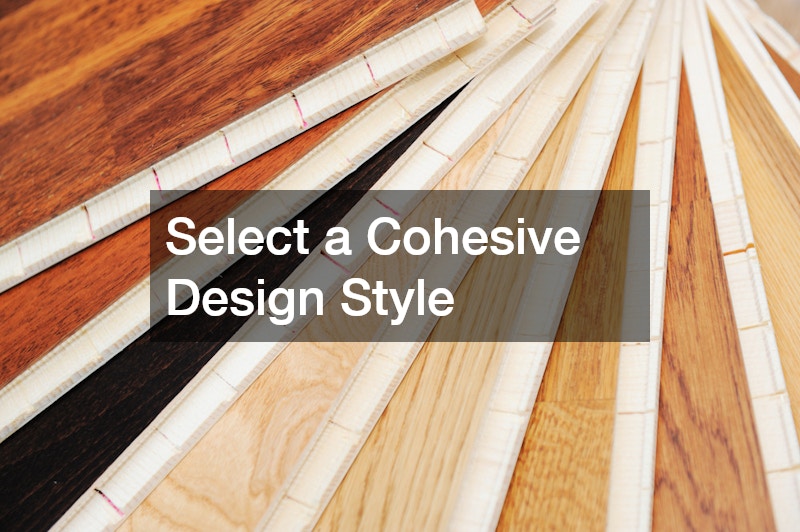Planning a home addition is an exciting opportunity to expand your living space, improve your lifestyle, and enhance the overall value of your property. However, many homeowners approach this process without a clear roadmap, which can lead to stress, budget overruns, or a final result that feels disconnected from the rest of the house. A successful home addition combines thoughtful design, careful planning, and attention to detail.
Whether you’re adding a new bedroom, a home office, or a sunroom, your goal should be to create a space that feels natural, comfortable, and visually appealing. This involves considering how the new area interacts with your existing home, selecting materials that complement the current aesthetic, and hiring professionals who can execute your vision with precision.
This guide will walk you through each stage of planning a home addition that seamlessly blends style and comfort. From defining your needs to selecting contractors and materials, you’ll gain practical advice that can make your project more manageable and enjoyable.
Define Your Needs and Lifestyle Goals
The first step in planning home additions is understanding how the space will be used. Without a clear vision, it’s easy to overspend on features that won’t improve your day-to-day life. Taking the time to define your needs upfront will help you create a functional, comfortable, and stylish addition that integrates seamlessly with your existing home.
Map out how you’ll use the new space
-
Consider your daily routines and how a new space could improve them. Will it be a playroom for children, a quiet office, or a guest suite?
-
Think long-term: if you plan to age in place or eventually sell your home, factor in elements like accessibility, storage, and flexibility.
-
Determine the functional requirements: do you need extra closets, built-in shelving, or an open layout?
Visualize your space
-
Use a vision board or a digital design tool to collect images, color palettes, and materials that inspire you.
-
Think about how the addition will flow with your existing home. A seamless connection ensures your home feels cohesive rather than disjointed.
Consider storage and organization
-
Built-in solutions can maximize space without overwhelming the room.
-
Beautiful cabinets not only add storage but also serve as a focal point in kitchens, bathrooms, or living areas.
Practical Advice
-
Create a detailed list of must-haves versus nice-to-haves to guide design decisions.
-
Measure existing spaces and note window placements, doorways, and ceiling heights to ensure the addition aligns with your current home.
By carefully defining your goals and lifestyle needs in this detailed manner, you can make informed decisions throughout the project. This reduces costly mistakes, minimizes redesigns, and ensures the addition truly enhances both the functionality and style of your home.
Set a Realistic Budget and Timeline

Budgeting and scheduling are critical to the success of any home addition. Without clear parameters, costs can quickly spiral out of control, and projects can drag on far longer than anticipated. By breaking down expenses, planning for hidden costs, and establishing a realistic timeline, you can reduce stress and keep your project on track.
Break down costs
-
Construction: Includes framing, roofing, drywall, insulation, and finishing work. Each of these components can vary widely in cost depending on the materials and complexity of the design.
-
Materials: Flooring, cabinetry, paint, lighting fixtures, and windows are major contributors to your budget. Selecting mid-range materials can balance quality and cost.
-
Labor: This includes the fees for general contractors, subcontractors, and specialty professionals such as painters, carpenters, and flooring installers. Labor costs can fluctuate based on your location, project size, and the level of expertise required.
-
Permits: Many homeowners overlook the expense of permits, which are required by local authorities to ensure compliance with building codes. Factor in both the application fees and potential inspection costs.
Include hidden costs
Unexpected expenses often arise in home additions. Planning for these in advance will prevent last-minute financial surprises:
-
HVAC upgrades: If the new addition significantly changes the heating or cooling load of your home, an HVAC contractor may need to upgrade or expand your system.
-
Electrical and plumbing modifications: Adding new circuits, outlets, lighting, or plumbing lines can be more expensive than anticipated, particularly if existing systems require major adjustments.
-
Contingencies: Always include 10–15% extra in your budget to cover unforeseen issues such as structural repairs, material delays, or design modifications.
Hire reliable professionals
Working with trusted experts ensures the quality, safety, and efficiency of your addition:
-
HVAC contractor consultations help determine the proper system size, placement, and energy efficiency for the new space.
-
Local electrical services can evaluate existing wiring, recommend upgrades, and ensure all work is up to code.
-
Clear communication with professionals reduces misunderstandings and helps prevent costly mistakes or project delays.
Timeline considerations
A realistic timeline keeps your project organized and manageable:
-
Break the project into stages: design, permitting, construction, and finishing. This approach allows you to allocate time and resources effectively for each phase.
-
Factor in lead times for materials, custom cabinetry, or specialty items, as delays can push the completion date back.
-
Consider potential weather disruptions, especially for roofing, exterior work, or landscaping.
-
Use project management tools or spreadsheets to track tasks, deadlines, and contractor responsibilities, ensuring the project stays on schedule.
Practical Advice
-
Obtain at least three quotes from contractors and service providers for each major component of the project. Comparing prices and timelines gives you a realistic view of costs and helps identify any outliers.
-
Keep all communication with contractors clear, written, and documented. Written agreements reduce misunderstandings and create a reference in case disputes arise.
-
Prioritize spending on areas that directly impact comfort and longevity, such as proper HVAC installation, electrical safety, and quality construction materials.
-
Establish check-in points at the end of each project stage to review progress, approve payments, and address any issues before moving forward.
By carefully planning your budget and timeline, you gain a realistic picture of what your home addition will cost and how long it will take. This reduces stress, prevents overspending, and ensures that your project progresses smoothly from design to completion.
Select a Cohesive Design Style

Choosing a design style for your home addition is about creating a space that complements your existing home while reflecting your personal taste. A thoughtfully designed addition not only enhances the aesthetic of your property but also ensures that the new space feels intentional, comfortable, and connected to the rest of your home.
Ensure flow and continuity
To create a cohesive home addition, carefully observe the architectural elements of your existing home and carry them through to the new space:
-
Architectural features: Note ceiling heights, molding styles, window shapes, and door trim. Repeating or harmonizing these elements in your addition ensures a seamless visual connection.
-
Color palettes and materials: Match or complement the existing colors and finishes to prevent a stark contrast. Walls, flooring, cabinetry, and hardware should feel intentional rather than mismatched.
-
Spatial flow: Consider how people will move between the old and new areas. Avoid abrupt transitions by aligning doorways, hallways, and flooring patterns so the addition feels naturally integrated.
-
Lighting and ambiance: Consistent lighting design, including natural light considerations and fixture styles, contributes to visual harmony.
Popular design approaches
When choosing a design style, think about your lifestyle and the mood you want the space to convey. Popular approaches include:
-
Modern: Characterized by clean lines, neutral color palettes, and minimalistic finishes. Modern designs often use materials like glass, metal, and smooth painted drywall to create an uncluttered and sophisticated look.
-
Transitional: A blend of contemporary and traditional elements, transitional style allows for more flexibility. Think classic furniture shapes paired with modern finishes or soft color schemes that balance comfort and elegance.
-
Traditional: Rich textures, classic moldings, and warm, inviting color schemes define traditional design. This style often includes detailed woodwork, patterned fabrics, and elegant cabinetry, making it a timeless choice for a home addition.
Practical Advice
- Collaborate with a painting contractor to select paint colors, wall finishes, and accent tones that complement both your new addition and your existing rooms.
-
Use drywall creatively to add visual interest, such as feature walls, built-in niches, or subtle textures that enhance the character of the space.
-
Create a comprehensive mood board combining materials, furniture, cabinetry, and finishes. This allows you to visualize how everything works together before committing to construction.
-
Consider scale and proportion carefully—furniture and decorative elements should fit the dimensions of the new space without overwhelming it or feeling too sparse.
-
Test samples of finishes in the room itself to see how lighting, natural or artificial, affects color perception and material texture.
By thoughtfully selecting a cohesive design style and paying attention to continuity, color, and proportion, your home addition will feel like a natural extension of your existing home rather than an afterthought. A well-integrated design enhances both comfort and style, creating a space that is visually appealing, functional, and enjoyable to live in.
Choose Materials for Durability and Comfort
Selecting the right materials is one of the most critical steps in planning a home addition. The materials you choose impact both the aesthetics and the longevity of your space. High-quality materials not only look appealing but also reduce long-term maintenance, enhance comfort, and increase the overall value of your home.
Flooring
-
Vinyl flooring is a popular option for high-traffic areas or spaces prone to moisture, such as kitchens, bathrooms, and laundry rooms. It is durable, easy to clean, and provides a softer, more comfortable surface underfoot compared to tile or hardwood.
-
Consider strategically mixing flooring types to define functional zones within the addition without creating a disjointed look. For example, vinyl in utility areas, hardwood or laminate in living spaces, and tile in wet areas can provide both function and style.
-
Think about the thickness, texture, and finish of vinyl flooring. Luxury vinyl planks or tiles with realistic wood or stone textures can elevate the appearance while maintaining durability.
Cabinetry and storage
-
Beautiful cabinets are both functional and decorative. They provide storage while serving as a focal point in kitchens, bathrooms, or multipurpose rooms.
-
Choose materials and finishes that coordinate with other surfaces, such as flooring, walls, and countertops, to create a cohesive design. Wood, veneer, or laminate finishes can all work depending on your style preferences and budget.
-
Consider built-in storage solutions to maximize space efficiency, including pull-out drawers, shelving, and hidden compartments. Functional design paired with high-quality materials ensures longevity and usability.
Practical Advice
-
Request samples of flooring, paint, and cabinetry before finalizing choices to ensure they work harmoniously in your space.
-
Consider longevity and maintenance in addition to aesthetics—sometimes slightly more expensive materials pay off over time.
-
Coordinate with contractors to ensure materials are installed correctly to maximize lifespan and performance.
By carefully selecting materials for your home addition, you ensure that the space is not only visually appealing but also functional, durable, and comfortable for years to come. Thoughtful choices in flooring, cabinetry, and wall finishes create a foundation for a home addition that balances style with practicality.
Hire Trusted Contractors and Services

A home addition is only as good as the professionals executing it. Hiring reliable contractors ensures your project is completed on time, within budget, and up to code. The right team will not only provide high-quality work but also help guide you through technical decisions and unexpected challenges, making the process smoother and less stressful.
Roofing and structural work
-
Roofing contractors protect the structural integrity of your home addition. Proper installation prevents leaks and energy loss.
-
Consider materials that complement your home’s existing roof while offering long-term durability.
Windows and glass features
-
Local glass services can provide custom solutions for windows, skylights, or sliding doors.
-
Insulated or low-emissivity glass enhances energy efficiency while improving comfort.
General contracting considerations
-
Verify licenses, insurance, and past project references.
-
Ensure that the contractors understand your vision for a cohesive design.
Practical Advice
-
Ask for a detailed contract that outlines costs, timelines, and responsibilities.
-
Request to see examples of previous home additions from each contractor to gauge quality.
-
Maintain regular check-ins to monitor progress and address issues promptly.
By carefully selecting and managing trusted contractors, you minimize the risk of delays, budget overruns, and substandard work. A skilled, coordinated team ensures your home addition meets both functional needs and aesthetic expectations, resulting in a seamless, high-quality expansion of your living space.
Focus on Comfort Enhancements
While style and aesthetics are important, comfort is what makes a home addition truly livable. A thoughtfully designed space should prioritize climate control, lighting, and furnishings to create an environment where you feel relaxed and at ease. Addressing these factors carefully ensures that the addition is functional, cozy, and enjoyable year-round.
HVAC and climate control
- A properly sized HVAC system, installed and evaluated by a qualified HVAC contractor, ensures consistent temperature and air quality throughout the new space.
-
Zoning systems allow independent temperature control for the addition, enhancing comfort and efficiency.
Lighting strategies
-
Maximize natural light with well-placed windows or skylights.
-
Layer artificial lighting with ambient, task, and accent lights to suit various activities.
Soft furnishings and textiles
-
Local bedding companies provide customized options for guest rooms or bedrooms in the addition.
-
Rugs, curtains, and furniture placement can influence how cozy and inviting the space feels.
Practical Advice
-
Test furniture arrangements temporarily to see how they impact flow and accessibility.
-
Incorporate soft textures and layered lighting to make the space feel warm and inviting.
-
Consider energy-efficient lighting and window treatments to reduce long-term costs.
Investing in comfort improvements ensures that your home addition is not only visually appealing but also a pleasure to live in.
Incorporate Smart Finishing Touches
The finishing touches can transform a standard addition into a sophisticated, stylish space. Attention to detail elevates the overall look and feel of your home.
Cabinet and trim details
-
Hardware, crown molding, and baseboards can create a polished, cohesive appearance.
-
Beautiful cabinets with well-chosen handles or knobs make storage both functional and decorative.
Flooring and wall transitions
-
Smooth transitions between different flooring types prevent awkward lines and improve flow.
-
Accent walls or textured finishes add depth and personality without overwhelming the space.
Windows and built-ins
-
Local glass services can create custom window features that maximize natural light and style.
-
Built-in shelving or benches increase utility while maintaining a streamlined appearance.
Practical Advice
-
Use contrasting textures and colors to highlight architectural details.
-
Small details like lighting fixtures, hardware finishes, and trim work can tie the whole space together seamlessly.
-
Consider adding subtle focal points, such as a statement cabinet or feature wall, to enhance style.
Plan for Maintenance and Longevity
A well-designed addition requires ongoing maintenance to keep it functional and attractive. Planning for long-term care preserves your investment.
Routine inspections
-
Check HVAC systems, electrical work, and plumbing regularly to prevent issues before they escalate.
-
Inspect roofing, siding, and windows for wear or damage.
Surface upkeep
-
Maintain walls, floors, and cabinets with periodic cleaning and touch-ups.
-
Paint touch-ups and sealing of wood surfaces can prevent deterioration over time.
Seasonal adjustments
-
Rotate bedding and textiles from local bedding companies for comfort and freshness.
-
Inspect seals and insulation before extreme weather seasons to maintain efficiency.
Practical Advice
-
Keep a detailed maintenance checklist for all systems and surfaces.
-
Schedule professional inspections periodically to ensure long-term performance.
-
Create a simple calendar for seasonal maintenance tasks to avoid overlooking critical upkeep.
By considering maintenance during the planning stage, you minimize surprises and extend the life of your addition.
Final Steps: Inspect, Adjust, and Move In
Before fully enjoying your new space, take time to ensure everything is perfect.
Walkthrough and quality check
-
Conduct a detailed walkthrough with your contractors to verify workmanship.
-
Check that all systems—HVAC, lighting, plumbing, and electrical—function properly.
Decorating and personal touches
-
Add furniture, rugs, and decor items that reflect your personal style.
-
Balance aesthetics and functionality by arranging furniture for flow and accessibility.
Documentation and warranties
-
Keep a record of all warranties, contractor agreements, and permits.
-
Take photographs of completed work for reference and potential resale value.
Practical Advice
-
Test all appliances and systems for functionality before fully moving in.
-
Make small adjustments to furniture placement, lighting, and decor to optimize comfort.
-
Store manuals and warranties in an accessible location for future reference.
By carefully reviewing the finished addition and making small adjustments, you ensure a space that meets both your aesthetic and practical needs.
Conclusion
Planning a home addition that blends comfort and style requires careful thought, from defining your needs to selecting materials, hiring contractors, and finishing with thoughtful details. By approaching each step deliberately, you can create a space that enhances your lifestyle, complements your existing home, and stands the test of time.
With the right planning, professional support, and attention to detail, your home addition can become a seamless extension of your living space—one that balances elegance, functionality, and comfort in every corner.

